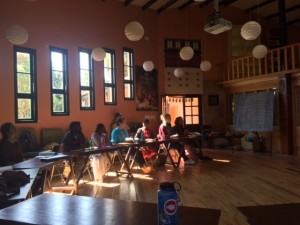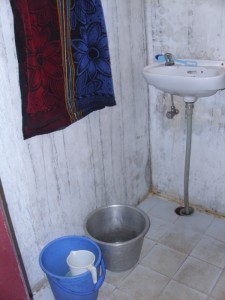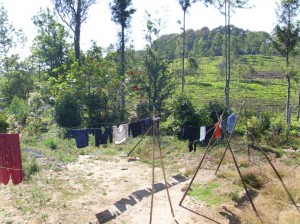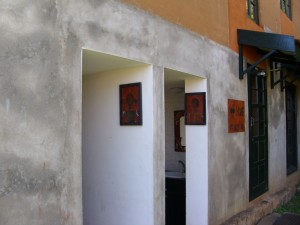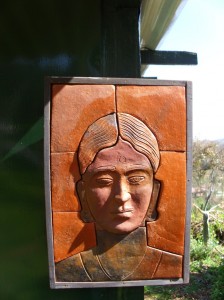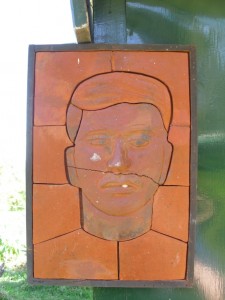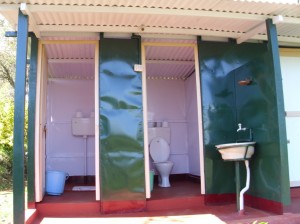From Meghan Furton
Seven weeks of class time gave us a valuable introduction to the Nilgiris Biosphere Reserve—to the natural environment, the interactions with the world outside, and the people living within—and created bonds of friendship between the 12 NFLC students. But now, we’ve followed the carefully laid-out curriculum as far as it will go. The faculty-paved trail ended and the wilderness began: it is up to us to use all that we had learned in the classroom and from each other to forge our own trails through 5 different research projects.
We are also splitting up—this is our first week apart. My concept of “we” has diminished to 3: Eshwari, our translator Durai, and I are the team assigned to work on water and waste in the Nilgiris. Here is a glimpse at our experience in the field…
We are staying in a room above the Keystone office in Coonoor. On our first full day in the field, Eshwari and I woke up early to work on field note documentation from the day before. After walking into Coonoor for a breakfast of Pongal and Pouri, we met our translator and caught one of the Kelly green, short-range buses to our destination village of Pajherthottam. By 11:30 am, we were surrounded by a group of young boys and our first volunteers. As we began conversations in one household, asking about drinking water sources, seasonal shortages, and waste and toilet habits, curious neighbors would pop their heads in and become our next volunteers. As we blazed through 4 conversations and an experimental mapping activity, we build up a reputation in the habitation and practice the difficulty of translating between English and Tamil. While I’m able to ask questions during the conversation, I’m completely lost during the introduction at the beginning. Multilingual conversations are still a huge challenge.
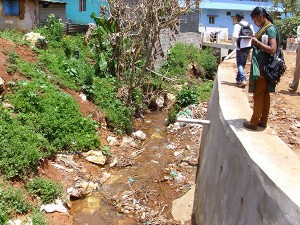
This stream bed running through town is filled with trash from a recent rainstorm and pipes discharging waste water without treatment. Contamination ignores city limits, but with so many upstream pollution problems, I wonder, why should this community care about water quality downstream?
We took a late lunch break in Coonoor for biryani and omelets, then returned to the village to speak to a woman who runs self-help groups and has applied for an individual toilet from a government aid program. This particular conversation is one example of the important relationships we are forming in the community: she is introducing us to the community structures and providing an interesting, proactive perspective to some of the concerns facing the village. By 6 pm, after many tea breaks, we were done with our guided conversations for the day and ready to head back into Coonoor and debrief all that we had learned—most important from the day was the difference between the houses on two opposite sides of the road. How do toilets, dumpsters, and water sources relate to the happiness and health of the people?

This group of boys lives in the first household we visited during the day. Behind them are piles of biowaste stacked by a panchayat dumpster that has not been emptied in the 2 months since its installation. Unfortunately, waste is littered all around the overfull dumpster as if it is not there at all.
Though much of the day was spent waiting for buses and waving to cackling hordes of children as I practiced my sloppy Tamil on them, our group had learned a lot just by being in the village—this kind of learning through participation, outside of formal “interviews,”’ is the ethnography part of our research project. Though the water and waste questions are somewhat straightforward, it is important to balance a deep understanding of the community with an easy-to-compare list of quantitative data points
But this is just part one of 5… Next week, we will all return from the field, ready to share our experiences from our individual projects. Stay tuned as the NFLC launches itself into uncharted territory: research.
